WORDPRESS
How To Start Dropshipping With No Money In 2024

Do you wonder how to start dropshipping with no money and if you can do it? Here’s our take – with a limited or no budget but high commitment, we believe anyone can start a profitable dropshipping business.
Well, we’re here to introduce you to the exciting world of dropshipping, a business model that can transform your financial future. It is low risk and can give you high returns with no monetary investment. However, we also understand your skepticism and confusion. You might wonder if this model truly works, especially for someone juggling a full-time job with scarce free time. Rest assured; we’ve got your back, so let’s begin!
How Does The Dropshipping Business Model Work?
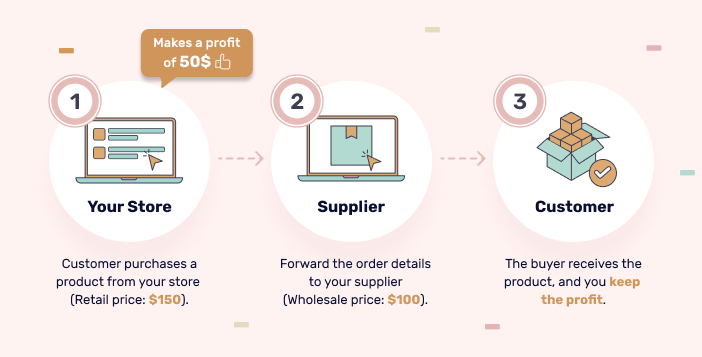
Dropshipping is a fulfillment method where we, as a seller, don’t need to stock the products. Instead, when selling a product, we purchase the item from a third party and have it shipped directly to our customer.
This method means we never have to handle the product directly. It’s an ideal business model for aspiring entrepreneurs looking for low-risk business opportunities or those who don’t have large amounts of capital to invest in inventory.
The process process of how to start dropshipping with no money begins by setting up an online store and partnering with suppliers ready to dropship the products to our customers. Whenever a customer orders, we purchase the product from the supplier, who then ships it directly to them. The profit we get is the difference between what we charge our customers and what the supplier charges us.
How To Start Dropshipping With No Money?
Navigating through the world of dropshipping can seem overwhelming, especially if you need help figuring out where to start. But it’s important to remember that every expert was once a beginner. With a roadmap in hand, we’ll guide you through the steps on how to start dropshipping with no money.
Let’s dive into these steps and get you started on your dropshipping journey with no money down!
1. Free Product Research: Find Your Winning Items


Starting dropshipping with no money begins with high-quality product research. With dropshipping’s structure, upfront inventory investment isn’t necessary. It’s a saving grace for low-income individuals. The crucial initial step is identifying a profitable niche. It’s a balance between high demand and low competition. This is where your ‘winning’ item resides.
Finding this ‘winning’ item is an art. It’s the product that resonates with your customers. They crave it, have a need for it, and continuously search for the product. It’s the golden goose that draws customers to your store. The right product can transform your business overnight. It can be the difference between dwindling sales and a booming online store.
Product Research Methods
Various methods are available for conducting product research in the dropshipping business:
- Analyze Best Sellers On Your Supplier’s Website: Suppliers often showcase their best-selling items. These are proven sellers with high demand – a great starting point for identifying potential winning items.
- AutoDS Winning Products Hub: The hub is designed to streamline your product research process. It offers a curated list of winning products based on various metrics, saving you hours of research.
- Product-Finding Blog & Best Sellers YouTube Playlist: Blogs and YouTube playlists can provide insights into what’s currently popular and trending, giving you fresh ideas for products to dropship.
- AliExpress Dropshipping Center: This tool allows you to discover hot-selling products across various categories, aiding you in spotting winning items.
- Google Lens: By identifying objects within an image, Google Lens can help you find similar products and their demand online, a handy tool for product research.
- Keep Track Of Social Media Trends: Social media platforms can offer real-time updates on trending products and customer preferences, which are valuable information for your product research.
While all these methods have their merits, the standout among them is the AutoDS Winning Products Hub. The hub streamlines your product research process and provides a curated list of winning items, saving you the time and effort to sift through countless potential products.
Each product in the hub comes with an in-depth analysis, including its selling price, total orders, ratings, and supplier information. This comprehensive insight makes it easier for you to make informed decisions, reducing risks and maximizing potential profits.
Aside from that, we also offer a valuable knowledge base that can help you find your winning product. From blog articles to Youtube videos, we have everything you need to support you in your search.
2. Select A Reliable Dropshipping Supplier
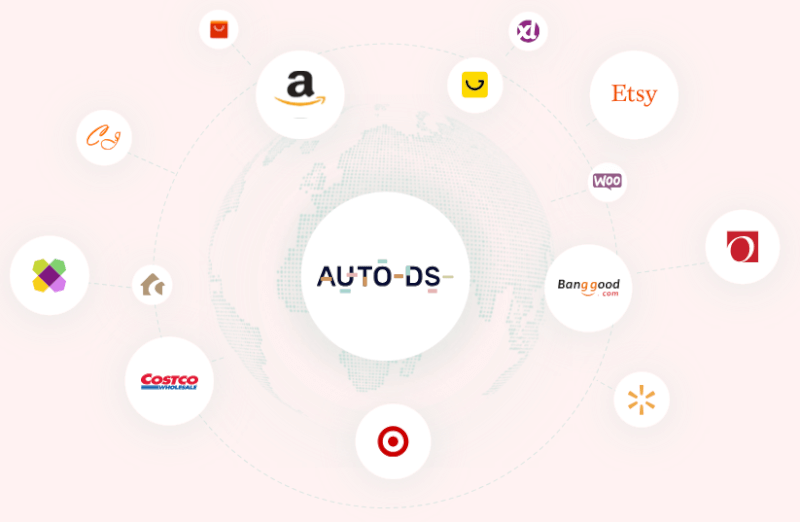

In dropshipping, suppliers are key to success. That’s because, interestingly, payment to suppliers occurs only after customers have paid us. This cost-effective approach allows for business operations without breaking the bank. However, it places significant importance on selecting a trustworthy supplier.
Why? Well, your supplier is your business partner. They’re responsible for stocking, packing, and shipping your products. This means that their reliability and your business reputation are directly linked with each other. If your supplier fails, you will face the consequences.
Checklist For Finding The Right Supplier
Therefore, selecting the right supplier is a must. Here’s a checklist to help with your selection:
- Practical Shipping, Return & Payment Policies: Check for shipping times and practical payment returns and policies so we can commit the same to our customers.
- Worldwide Warehouses: This promotes quicker delivery times and higher customer satisfaction. Aside from that, it also allows you to open your door to the global market, not just target any specific region. Doing so will lead to higher traffic and more sales.
- Wide Product Range: More options mean more potential winning products for you to sell.
- High-Quality Products: Quality products result in happy customers and fewer returns.
- Positive Reviews: Reviews often mirror the supplier’s reliability and product quality; it provides insights into buyers’ experience. Positive feedback equals a good experience.
- Excellent Customer Service: Good customer service facilitates smooth operations and problem resolution. This can help you retain customers and repeat business will help with your revenue moving forward.
Moreover, it’s essential not to restrict yourself to one supplier. Having all your eggs in one basket can be risky, especially in a business as dynamic as dropshipping. Diversification is a key risk management strategy that applies equally well in dropshipping. If one supplier falls short or runs out of stock, you have others to fall back on, ensuring your business continues uninterrupted.
Not only does diversification mitigate risk, but it also significantly expands your product range. Different suppliers often have different product lines and unique items. This increases the chances of finding those lucrative, high-demand products that can skyrocket your sales.
We understand the importance of variety, so we provide an extensive list of reliable suppliers. This list empowers you to explore various options, choose multiple partners, and diversify your product portfolio. Additionally, it’s crucial to remember that how to start dropshipping with no money entails leveraging these diverse supplier options to build a resilient and profitable business model.
3. Set Up Your Dropshipping Store: Choose A Selling Platform
Choosing a selling platform is vital in learning how to start dropshipping with no money. Essentially, a selling channel is a website m through which you can sell your products. You have two primary options: a customizable eCommerce website or a marketplace.
Customizable Website
When choosing your online store’s platform, consider your situation. When working with a tight timeline and budget, finding a solution that meets your goals without exhausting all of your resources is essential. Let’s discuss two popular choices: customizable websites and marketplaces.
Customizable websites, like Shopify, Wix, or WooCommerce, grant full control over your online presence. You shape your brand’s look and feel, fostering a unique identity. This personalization helps build customer loyalty, driving repeat business, which can be key when operating on a tight budget. Moreover, with tools like AutoDS AI Shopify Store, you can get a ready-to-sell Shopify store with winning products in just two munites.
However, it’s crucial to remember that with this option, driving traffic to your site falls entirely on your shoulders. This might be challenging if you’re balancing a full-time job, but it can lead to great success with the right tactics.
Top Customizable Websites:
Shopify


Shopify, a simple-to-use platform, is ideal for launching our dropshipping store. Several themes allow for customization to achieve distinctive branding and allow you to stand out in the competition. Its extensive app store expands shop features, including SEO, to help you gain more traffic. Further, it provides 24/7 assistance and safe payments and assures mobile responsiveness. These features can help you increase customer satisfaction and build loyalty toward your dropshipping business.
Pros:
- User-friendly interface
- A wide selection of customizable themes
- Extensive app marketplace to boost your store’s functionality
- Integrated payment options with Shopify Payments
- Excellent customer support
- Mobile responsive designs
- SEO-friendly site structure
Cons:
- Monthly fees can add up, especially with premium themes and apps
- Some advanced features require coding knowledge
- Unless you use Shopify Payments, transaction fees apply
- Switching from Shopify to another platform can be complicated
Beginner’s Tip: If you want to be successful in Shopify dropshipping, expand your knowledge about the platform by taking this free Shopify A-Z dropshipping course.
Wix


Wix is ideal for our budding dropshipping venture with its intuitive interface. It offers eCommerce templates to build our professional store. And last but not least, its robust SEO tools attract vital organic traffic.
Pros:
- User-friendly design interface
- Variety of eCommerce-friendly templates
- Comprehensive SEO tools
- Supports multiple payment options
- Intuitive website builder tool to help you create your store easily
Cons:
- Once you choose a template, you can’t change it later
- The basic plan may lack essential eCommerce functionalities
- Advanced features require higher-priced plans
- Limited customization compared to platforms like Shopify
- The website speed can be slow, impacting user experience
Beginner’s Tip: Take advantage of this free Wix dropshipping course and learn more about the tips and tricks for scaling your business.
WooCommerce


WooCommerce, which is open-source and completely configurable, fits our dropshipping needs perfectly. It integrates with WordPress and provides superb blogging functionality. This will help you provide more valuable information to your customers.
Pros:
- Complete control over customization
- Excellent blogging capabilities
- Strong SEO capabilities
- Supports a wide range of plugins
Cons:
- Requires some technical know-how to set up
- Maintenance and updates are the user’s responsibility
- Potential cost implications for premium plugins and themes
- Site speed and performance can be influenced by the chosen theme and plugins
Marketplace
In contrast, marketplaces like eBay, Amazon, Etsy, and Facebook Marketplace are busy digital markets. These platforms offer large, built-in audiences, helping your products gain visibility without investing heavily in marketing.
Using marketplaces can be an excellent starting point if you’re skeptical about the potential of dropshipping and want to witness that first sale quickly. The trade-off? Limited control over your branding and a portion of your sales going to the platform.
Top Best Marketplace Platforms:
eBay


eBay, a bustling online marketplace, that has millions of daily shoppers looking for their next product to purchase. Therefore, they can bring lots of free organic traffic to your store if you’re selling the right products. This can be through their auction system, competitive pricing, and advertising strategies. Furthermore, it provides easy listing processes and global selling opportunities. Additionally, eBay’s reputation fosters buyer trust by offering buyer and seller protection.
Pros:
- Access to a broad international customer base
- Simplified listing process
- Built-in buyer trust due to platform reputation
- Millions of free organic traffic daily from online shoppers
Cons:
- High competition among sellers
- Seller fees can impact profits
- Strict selling policies
- Customer disputes can favor buyers over sellers
Beginner’s Tip: Maximize the outstanding potential of eBay, take this free eBay dropshipping course now and learn strategies, and insider tips to succeed in this venture.
Amazon


As a global retail titan, Amazon provides an expansive customer reach through its worldwide presence and mobile-friendly experience. Moreover, it encourages trust through its A-Z buyer and seller guarantee policy.
Pros:
- Access to a vast, worldwide customer base
- Trustworthy platform that builds confidence in buyers
- Amazon brings millions of online shoppers daily, offering free organic traffic to your Amazon store
Cons:
- Intense competition from a multitude of sellers
- Seller fees on Amazon can affect profit margins
- Strict and intricate selling guidelines to navigate
- Risk of account suspension due to policy breaches
Beginner’s Tip: Learn our secrets on how to start an Amazon dropshipping business in our full free beginner’s tutorial.
Etsy


Etsy shines as a niche marketplace for one-of-a-kind, handcrafted, and antique items. Its supportive community fosters a trustworthy selling environment. Furthermore, Etsy helps increase product visibility.
Pros:
- Ideal for unique, handcrafted, or vintage items
- Supportive community creates a trustworthy platform
- SEO-friendly platform improves product visibility
- As a niche market, it is a new untapped platform for dropshippers with minimal competition
Cons:
- More suitable for niche, not mainstream products
- Limited items can be sold on the platform as it is a niche market
Beginner’s Tip: Discover expert tips and strategies for successful dropshipping with this free Etsy comprehensive course. With this, you can take advantage of the untapped potential of Etsy’s niche market and unique offerings to boost your dropshipping business.
Facebook Marketplace
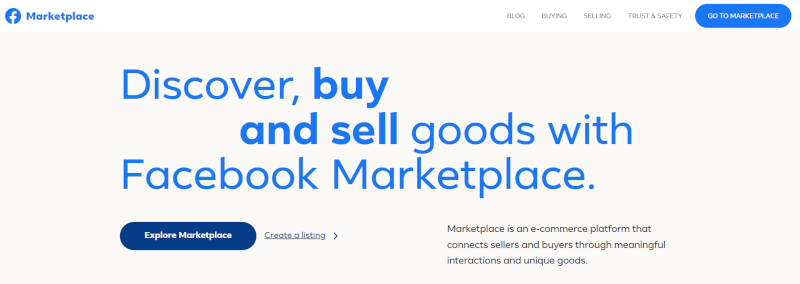

Facebook Marketplace is a good dropshipping platform because its vast user base allows sellers to reach a large audience easily. With its local focus, sellers can target customers in specific areas for faster shipping and better customer service. Additionally, Facebook’s social nature enables sellers to engage with potential customers and build trust through interactions and recommendations.
Pros:
- Tons of free organic traffic
- Localized targeting
- Sell in all 50 US states
- Free to list and sell products
Cons:
- Limited to local buyers only
- Less formal marketplace
- Inadequate seller protection
- Dropshipping is only available to those residing in the US
- No ‘shipping options’ if you don’t live in the US
Facebook Shops
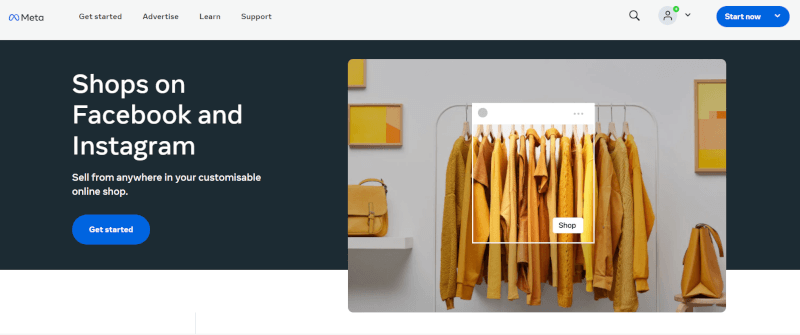

Facebook Shops is an extension of your business on Facebook. Creating a Shop is free and simple, great for our no-budget case. What’s even more exciting is that FB Shops integrates with Instagram, expanding our customer base.
Pros:
- Free and easy setup, fitting our limited budget
- Cross-platform integration (Facebook and Instagram) broadens market reach
- Allows direct communication with customers via Messenger, WhatsApp, or Instagram Direct
Cons:
- Relatively new, fewer features than established marketplaces
- Limited to Facebook and Instagram users
- Restrictions on certain product categories and markets
- Seller and buyer protection is not as robust as on dedicated eCommerce platforms
4. Import Winning Products To Your Dropshipping Store
Once your store is set up, it’s time to populate it with your selected products. Importing winning products is crucial as it drives sales. Remember, high-demand items attract customers, leading to more transactions. This strategy maximizes our profit potential and boosts our dropshipping success.
We can import our winning products in two ways: manual and automatic. Manual import is traditional and requires hands-on effort. We search for products, copy their details, then paste them on our website. It’s time-consuming, but it gives us control over every product detail.
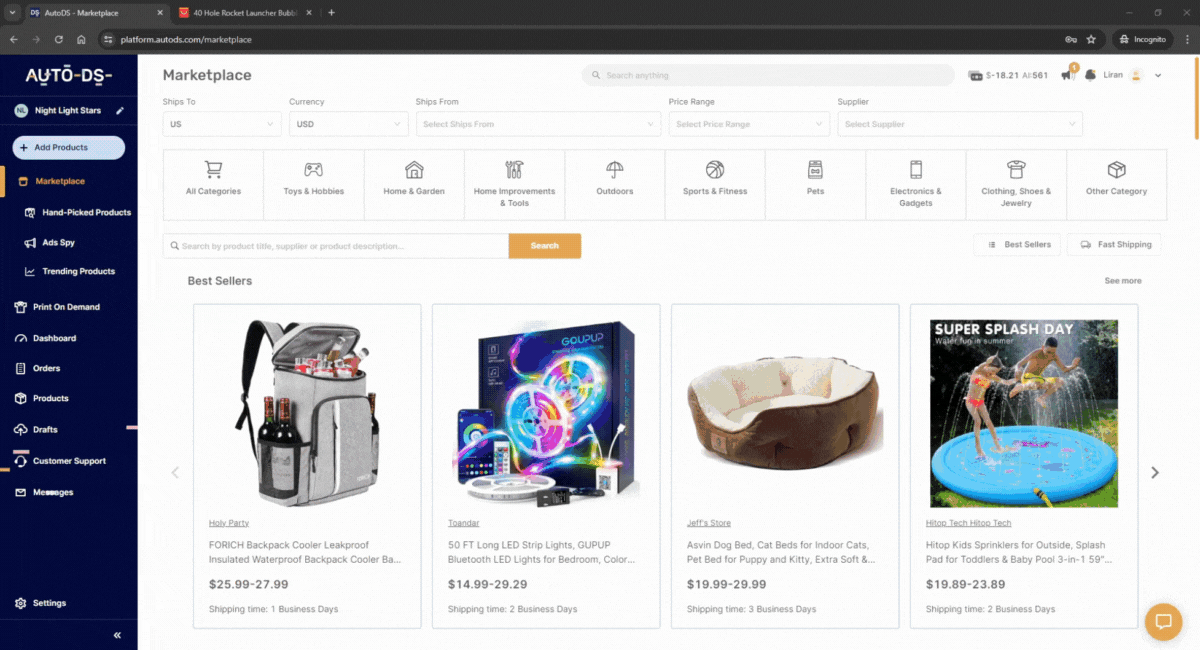

Automatic import, on the other hand, is the modern method of adding products to our store. With a tool like AutoDS, we simply search for the product we want to sell and from which supplier we want to source it. The system then imports it into our store automatically. This method saves time and minimizes the chance of errors. When considering how to start dropshipping with no money, leveraging efficient tools like AutoDS for automatic product importation can streamline your operations and optimize your store’s inventory effortlessly.
5. Run Online Marketing Campaigns To Boost Your Profits
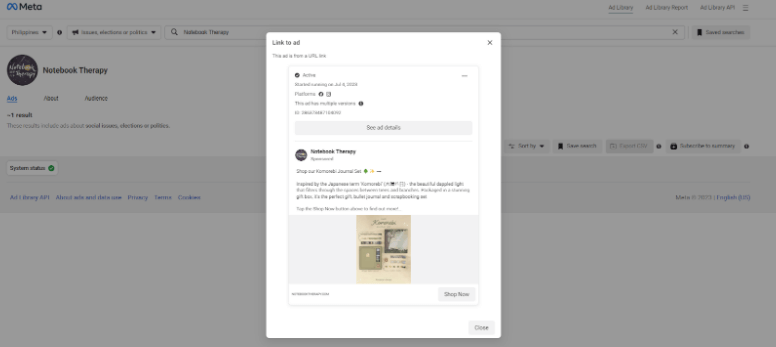

Creativity is crucial in starting dropshipping with no money. To make it a success, this is where effective marketing steps in. Strategic, low- to no-cost marketing initiatives can catapult visibility for our products without draining our resources. They drive traffic, boost sales, and ultimately make our dropshipping venture profitable.
Moreover, good marketing helps build trust, enhancing customer retention and creating a lasting brand reputation. It truly is the lifeblood of a successful, budget-conscious dropshipping venture. Thus, here are various marketing methods we can use:
Shopify/Wix/WooCommerce:
- PPC ads
- Email marketing
- Influencer marketing
- Blog page
- Create free content on TikTok
eBay:
- Promoted Listings Advanced
- Promoted Listings Standard
- Volume Discounts
- Sales Events
- Send Offers
Amazon:
- Win the buy box
- Amazon PPC
Etsy:
Facebook:
6. Fulfill Customer Orders Quickly
Order fulfillment, executed promptly, is key to customer satisfaction in our dropshipping business. On-time delivery leaves a lasting impression, enhances trust, and ultimately encourages repeat purchases.
There are different types of order fulfillment methods, and their differences are quite significant. Let’s explore them below.
Manual order fulfillment is a hands-on method. With this method, we go to our supplier’s website every time we get an order. Then, we order the product directly from the supplier’s website to our buyer’s address and manually update the tracking information once it’s available.
On the other hand, automatic order fulfillment, a service provided by AutoDS, streamlines the process. Once a customer places an order, AutoDS automatically forwards it to the supplier. It’s quick, efficient, and gives us more time to focus on growing our business.
Each method has pros and cons; the right choice depends on our business model and resources. To explore more about how to start dropshipping with no money and the benefits of automatic order fulfillment, visit our pages on automatic order fulfillment and Fulfilled by AutoDS.
7. Offer Excellent Customer Support
Top-notch customer service is the backbone of our business’s success. It’s essential because it builds trust and creates loyal customers who’ll support and promote our brand. We turn our venture into a viable source of income through excellent customer service.
As we venture into dropshipping, providing excellent customer service means being accessible, responsive, and helpful. Communication channels like live chat, email, and phone are instrumental.
Another tip is to check out your customers’ messages daily. The quicker we respond to our customers, the higher their satisfaction with purchasing from us.
We can keep our customers happy by leveraging these platforms, addressing concerns promptly, keeping them informed, and ensuring their experience with our business is positive. Remember that satisfied customers are more likely to return and refer others to us, growing our dropshipping business even when dropshipping with no money.
Success Tips On How To Start Dropshipping With No Money


Now that you already know how to start dropshipping with no money, we know that you might also be thinking about how to make it a success. Embarking on a dropshipping journey with limited resources is an uphill battle. But it’s feasible and can be a stepping stone to financial freedom.
We understand the constraints of having no budget and the aspiration to transform your financial status. That’s why we’re here to guide you through essential tips to help you succeed in dropshipping without breaking the bank.
Tip #1: Test & Import Best-Sellers
The beauty of dropshipping is that it gives us the freedom to test different products without worrying about unsold stock and ultimately suffering financial loss. It’s a safety net we need when resources are limited.
However, we should only leave our success partially up to chance. We must invest time in product research, uncovering those hidden gems that customers can’t resist. With careful analysis and strategic choices, we can import best-sellers into our stores, balancing the equation between risk and reward in our favor.
Tip #2: Promote Products To Drive Traffic
Product promotion is crucial to our strategy. With it, we may be able to attract several potential customers.
Yes, some marketing strategies require investment. Yet, the returns outweigh the initial costs once we learn to market correctly.
However, there is no need to worry if you can’t allocate a marketing budget. Organic promotion avenues exist. SEO-optimized blogs on Shopify, for instance, invite organic traffic. Frequent social media postings are also free and can help us reach wider audiences.
Remember, visibility is our ticket to sales. Whether paid or organic, our efforts to be visible lay the foundation for our dropshipping success. This foundation will ultimately drive our growth and break our current financial barriers. Marketing isn’t just an option; it’s our lifeline.
Tip #3: Stay In Touch With Customers
As previously mentioned, engaging with our customers is vital. Good communication fosters trust. And then, buyer’s confidence translates to customer loyalty and repeat purchases.
Our customer service should be top-notch. Whether through email, chat, or phone, we must provide responsive and helpful interactions. These touchpoints shape our customers’ experience and our business reputation.
Remember, in dropshipping, customer satisfaction is crucial. Our efforts to ensure this can make a difference between a one-time sale and a loyal customer. Let’s remember that we’re not just selling products but also nurturing relationships.
Tip #4: Automate Your Dropshipping Store
Embracing automation is our fourth tip on how to start dropshipping with no money. You can use AutoDS, a proven companion by many for dropshipping automation. Undoubtedly, the platform is a treasure trove of useful tools that streamline our business and facilitate growth.
Automation in dropshipping is a game-changer. It removes tedious tasks, reduces errors, and frees up our time. Thus, by successfully implementing this, we can focus on essential aspects like marketing and customer engagement.
Let’s delve into what AutoDS offers:
- Product research tool: Check trending top-selling products from time to time to help you update your listing.
- Print on Demand: design and sell custom products without handling production or shipping.
- Price/stock monitoring: Monitor product price changes and stock levels so they can be changed accordingly on our website.
- Quick product imports: Save time by importing products rapidly.
- Automatic price optimization: Optimize prices for maximum profitability.
- Complete order fulfillment: Automate order processing for swift deliveries.
- Easy inventory management: Keep track of your inventory seamlessly.
- Automatic tracking updates: Share real-time order tracking with customers.
- Advanced image editor: Perfect your product images for better conversions.
Moreover, AutoDS extends beyond automation tools. It offers business policy templates, eBooks, and detailed dropshipping guides, all aimed at nurturing our dropshipping journey. The benefits are immense and worth exploring!
Frequently Asked Questions
Can I Start Dropshipping With No Money?
Yes. Some platforms, such as Shopify, offer free trial periods during which you can set up and launch your dropshipping store. Further, you can also source products from suppliers offering dropshipping services without any upfront costs. When considering how to start dropshipping with no money, leveraging these free trial periods and sourcing products from cost-free suppliers can be a viable option to kickstart your business.
Is It Easy To Start Dropshipping?
Starting dropshipping is easy, as it doesn’t require handling inventory or managing shipping. However, long-term success requires careful planning, market research, and effective marketing strategies. Learning about product sourcing, setting up an online store, and mastering customer acquisition techniques is essential to maximize your chances of success.
What Are The Different Dropshipping Fees?
Dropshipping fees can vary depending on the platforms and services you choose. Common expenses include selling channel fees, such as listing and transaction fees on marketplaces like Amazon or eBay, which can range from a few cents to a percentage of the sale. Aside from that, there are marketing fees, such as advertising costs on platforms like Facebook or Google Ads, that you may incur to promote your products and drive traffic to your online store. Additionally, some dropshipping platforms may charge monthly subscription fees or transaction fees for each order processed.
What Is The Best Platform To Start Dropshipping On?
Choosing the best platform to start dropshipping depends on your specific needs and preferences. Shopify is popular due to its user-friendly interface, extensive app integrations, and dedicated dropshipping features. Likewise, WooCommerce is also a customizable platform and integrates seamlessly with WordPress. Other popular venues include eBay, Facebook, Etsy, and Amazon.
Conclusion
Isn’t it amazing how it’s possible to kickstart a thriving dropshipping venture, even without an upfront investment? The path to starting dropshipping with no money may seem daunting initially, but with our outlined strategies and tips, we hope it now feels within your grasp. Thus, remember, every great journey begins with a single step, so don’t let your current financial situation deter you from starting your online business.
We’re excited to see you embark on this transformative journey and create your own dropshipping success story. Remember, action is the only thing standing between you and your dream business. If you want to know more about how to start dropshipping with no money, here are helpful resources that you can visit:


















